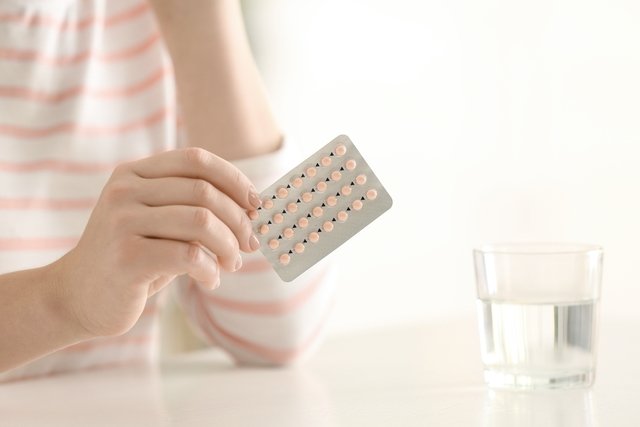Cerazette is an oral contraceptive pill for daily use, indicated to prevent pregnancy, as it contains desogestrel in its composition, a type of female hormone, similar to progesterone produced by the body, which acts to prevent ovulation, preventing a possible pregnancy.
This contraceptive, also known as mini pill, as it contains only progesterone in its formula, can be recommended for use during breastfeeding or for women who have contraindications to using combined pills. Find out more about the indications for the minipill.
Cerazette can be purchased at pharmacies or drugstores, containing 28 tablets in the pack, and should only be used under the advice of a gynecologist.

What is it for
Cerazette is indicated to prevent pregnancy, especially in women who are breastfeeding or who are unable or unwilling to use estrogens. See other contraceptives recommended for breastfeeding.
How to drink
The Cerazette contraceptive pill should be taken orally daily, with a little water, taking 1 tablet following the direction of the arrows on the card, for 28 days, always at the same time, so that the interval between two tablets is always 24 hours. After these 28 days, you must start a new pack of Cerazette, without taking a break.
Starting to use Cerazette depends on whether you have previously used another contraceptive method or not, and includes:
- When no other hormonal contraceptive has been previously used: you should take the Cerazette tablet on the first day of your period. Another option is to start between the 2nd and 5th day of your period, in which case it is necessary to use a barrier contraceptive method during the first 7 days of treatment;
- Switching from combined hormone oral contraceptives, vaginal ring, or skin patch: the Cerazette tablet should be taken the day after stopping the previous contraceptive or on the day of removing the vaginal ring or patch;
- Changing from injectable contraceptive, implant or hormonal IUD: Start using Cerazette on the day you should have your next injection or on the day you remove the implant or IUD.
Furthermore, to use Cerazette during breastfeeding, treatment must be started between the 21st and 28th day after giving birth. If starting after this period, an additional barrier contraceptive method must be used in the first 7 days of using cerazette.
It is important to highlight that Cerazette prevents pregnancy, but does not prevent sexually transmitted infections (STIs), so it is recommended to always use a condom in all sexual relations. Check out the main STIs.
What to do if you forget to take it
Contraceptive protection can be reduced if there is an interval of more than 36 hours between two pills, and there is a greater chance of getting pregnant if you forget to take it in the first week of using Cerazette.
Recommendations if you forget to take the Cerazette pill are:
If 1 or more tablets have been missed in the first week of treatment, and intimate contact has occurred in the week before the tablets are forgotten, there is a greater chance of pregnancy and, therefore, a doctor should be consulted.
Furthermore, if a woman forgets to take more than one pill from the same pack, it is important to consult a doctor because the more pills in a row are forgotten, the lower the contraceptive effect of Cerazette will be.
Possible side effects
The most common side effects that may occur during treatment with Cerazette are pimples, decreased libido, mood changes, nausea, weight gain, breast pain, menstrual irregularities, and absence of menstruation.
Although they are rare, other side effects that may arise are intolerance to the use of contact lenses, vaginal infections or thromboembolism.
Who shouldn’t take
The Cerazette pill should not be used by women in the following situations:
- Allergy to any component of the formula;
- Pregnancy or suspected pregnancy;
- Serious liver diseases;
- Current or previous history of deep vein thrombosis or pulmonary thromboembolism;
- Breast cancer or other known or suspected estrogen-dependent cancer;
- Undiagnosed vaginal bleeding, undiagnosed uterine or genital bleeding.
Furthermore, Cerazette should not be used in cases of prolonged immobilization due to surgery or illness, due to the greater risk of developing thrombosis.
Cerazette should also not be used by children, men, or women over 60. Discover other contraceptive methods to avoid pregnancy.
Bibliography
- SOBER, S.; SCHREIBER, C. A. Postpartum contraception. Clin Obstet Gynecol. 57. 4; 763-76, 2014
- ORGANON DO BRASIL INDÚSTRIA E COMÉRCIO LTDA. Cerazette (desogestrel). Available at: <https://www.saudedireta.com.br/catinc/drugs/bulas/cerazette.pdf>. Accessed on October 18, 2022

Sign up for our newsletter and stay up to date with exclusive news
that can transform your routine!
Warning: Undefined array key "title" in /home/storelat/public_html/wp-content/plugins/link-whisper-premium/templates/frontend/related-posts.php on line 12
Warning: Undefined array key "title_tag" in /home/storelat/public_html/wp-content/plugins/link-whisper-premium/templates/frontend/related-posts.php on line 13



